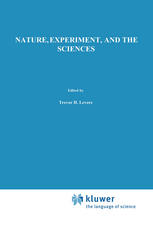The Background to Heinrich Hertz’s Experiments in Electrodynamics
- Jed Z. Buchwald
- … show all 1 hide
Download Chapter (3,754 KB)
Abstract
One hundred years ago an ambitious young German physicist demonstrated that electromagnetic radiation exists and that it behaves like light. Heinrich Hertz’s experiments had, without doubt, the widest impact outside the scientific community of any in physics up to that time. Within physics they surprised the British, who did not expect to find this kind of radiation quite so simply. His results were surprising to the Germans as well, but they were also perplexing and difficult to grasp, an effect that Hertz sought to overcome through an elaborate series of theoretical articles. Then, just as his influence within German physics seemed destined to reach heights hitherto achieved only by his mentor Hermann von Helmholtz, Hertz succumbed to an extremely painful jaw malady that he had suffered from even in the midst of his most intricate experiments and complex theorizing.


 Look
Look
Inside
Other actions
- Hertz, “Uber die Beziehungen zwischen den Maxwell’schen elektrodynamischen Grundgleichungen und den Grundgleichungen der generischen Elektrodynamik”. Ann Phys. Chem., 23: (1884) 84–103 See his Miscellaneous Works. 3 volumes. Translated by D. E. Jones. London: Macmillan and Co., 1896, Vol. I, 274.
- J. Z. Buchwald, “Oliver Heaviside, Maxwell’s Apostle and Maxwellian Apostate”, Centaurus, 28: (1985) 288–330. CrossRef
- Title
- The Background to Heinrich Hertz’s Experiments in Electrodynamics
- Book Title
- Nature, Experiment, and the Sciences
- Book Subtitle
- Essays on Galileo and the History of Science in Honour of Stillman Drake
- Book Part
- Part III
- Pages
- pp 275-306
- Copyright
- 1990
- DOI
- 10.1007/978-94-009-1878-8_12
- Print ISBN
- 978-94-010-7338-7
- Online ISBN
- 978-94-009-1878-8
- Series Title
- Boston Studies in the Philosophy of Science
- Series Volume
- 120
- Series ISSN
- 0068-0346
- Publisher
- Springer Netherlands
- Copyright Holder
- Springer Science+Business Media B.V.
- Additional Links
- Topics
- eBook Packages
- Editors
-
- Trevor H. Levere (2)
- William R. Shea (3)
- Editor Affiliations
-
- 2. Institute for the History and Philosophy of Science and Technology, Victoria College, University of Toronto
- 3. Department of Philosophy, McGill University
- Authors
-
- Jed Z. Buchwald (4)
- Author Affiliations
-
- 4. University of Toronto, Canada
Continue reading...
To view the rest of this content please follow the download PDF link above.
